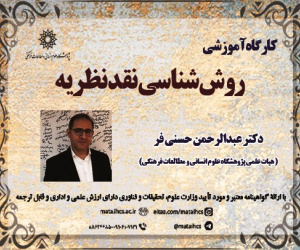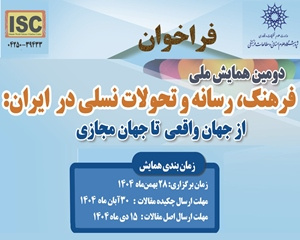بررسی ریشه های اساطیری آیین های باروری در مزار پریان (طارق- نهبندان) (مقاله علمی وزارت علوم)
درجه علمی: نشریه علمی (وزارت علوم)
آرشیو
چکیده
آیین باروری از آیین های رایجی است که در اغلب تمدن های باستان وجود داشته است. امروزه هنوز می توان نمودهایی از آیین ها و ردپای ایزدان و نمادهای باروری را در بسیاری از مراسم، ترانه ها و نمایش های بومی و محلی در قسمت های مختلف ایران دید. در این پژوهش، به معرفی و ریشه یابی اسطوره ای مؤلفه ها و آیین های باروری در مزار پریان (خراسان جنوبی) و ارتباط آن با ایزد یا ایزدان باروری ایران باستان پرداخته ایم. گردآوری اطلاعات به صورت میدانی و کتابخانه ای و شیوه پژوهش توصیفی- تحلیلی است. آیین های مزار پریان خراسان جنوبی شامل قربانی و پیشکش هدایا، پهن کردن سفره نذری، یک شب اقامت در مزار، رقص و شادی، پیکرگردانی، نام گذاری خاص و... است که در این پژوهش ریشه آن ها نیز بررسی و محقق شد که آیین های این مزار، برگرفته از آیین های پرستش ایزدبانوی باروری ایران باستان است؛ البته پری در سیر تحول خود در دوره اسلامی، به دلیل بعضی همسانی ها با جن مترادف شده و برخی از اعتقادات عامیانه در باب جن، به اساطیر پری و به تبع آن به آیین های باروری مزار پریان خراسان جنوبی نیز راه یافت.A Study of the Mythological Roots of Fertility Rite in Mazâr-e-pariyân (Tarq-Nehbandan)
The fertility rite is one of the most common rites that existed in most ancient civilizations. Today, manifestations of fertility rites and footprints of fairy and Anahita as gods and symbols of fertility can still be seen in many local and indigenous ceremonies, songs and plays in different parts of Iran. Writers In this research introduced and traced the myths of fertility components and rituals in the mausoleum of the fairies (South Khorasan) and its relationship with Anahita, the fertility goddess of ancient Iran. The rites of the Mazar-e-Pariyan of South Khorasan include sacrifice and offering gifts, spreading the votive table, overnight stay in the tomb, dancing and rejoicing, special lettering, etc. The roots of these rites were also studied in this research and the researcher It turned out that the rites of this Mazar are derived from the worship of Anahita, the fertility goddess of ancient Iran. Of course, the fairy who was the goddess of birth and fertility in ancient Iran, with the advent of Zoroastrianism, was hated because of some of her deeds and was among the devils. Continuing its evolution in the Islamic period, due to some similarities with the jinn, and some popular beliefs about the jinn, led to fairy tales and, consequently, to the fertility mirrors of the fairy tombs of South Khorasan.






